Being part of an integrated beef supply chain is allowing one Wiltshire-based couple to make significant strides in their farming careers despite only owning a land base of 12 acres and relatively little capital to invest.
For South Wraxhall-based Steve and Jo Pile working as part of Blade Farming (part of the ABP Food Group) supply chain is enabling them to rear more than 1650 calves a year in four buildings and allowing them to invest in their facilities rather than stock.
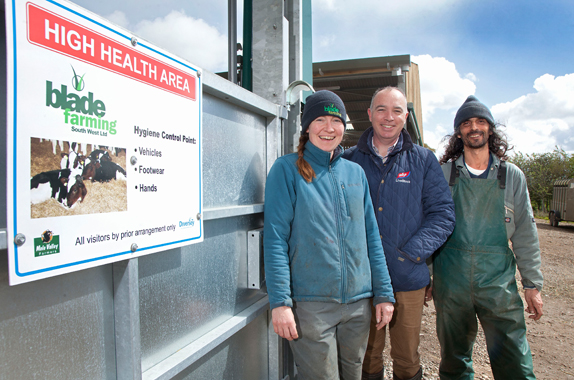
“Rearing calves for Blade means we can invest our capital in our facilities rather than livestock. Blade owns the calves and pays us a rearing fee, providing health and diet advice as well as management protocols which enable us to maximise calf growth rates.”
Calves, predominantly Aberdeen-Angus crosses, arrive at Steve and Jo’s unit as two week old calves and are immediately EID and BVD tagged and placed in to a yard in their batch. They are then fed milk from automatic feeding machines which record the calves weight every time they visit to drink, with the machine recognising each calve by its EID tag. “This information is automatically fed back in to the Blade IT system and enables us to keep a constant watch on calf growth rates without having to handle them. It means we can spot any which aren’t thriving quickly and can often spot a health issue before it becomes visible in the calf. We can also benchmark our calves’ performance against other rearers.
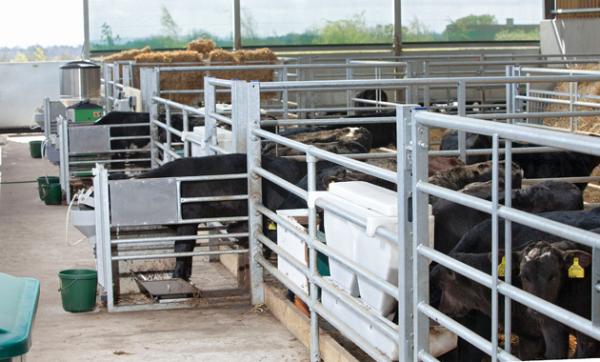
“We fill the 120-calf shed in two weeks, with calves weighed at the collection centre and arriving at about 50kg. We aim to keep calves in their batches all the time and fill the unit quickly to maintain a high health status among the calves,” explains Steve.
“Maintaining calf health is important in the rearing process as healthy calves thrive and gain weight quicker. We have installed electronically controlled blinds on the sheds which are adjusted according to the weather conditions, ensuring a constant air flow and moderating temperature according to the outside conditions.
“This helps keep the air in the buildings fresh without resulting in drafts which can cause respiratory disease issues,” he adds.
Calves remain on milk for about six weeks, being offered concentrates, fresh water and straw throughout the pre-weaning period. “The feeding machine gradually weans the calves off milk, with calves then moved in to a different shed where they have access to ad-lib feed and straw. The aim is for calves to grow at a rate of 0.85kg a day in both the milk and post-weaning phases, to ensure we maximise the potential in the calves and the nutrition.”
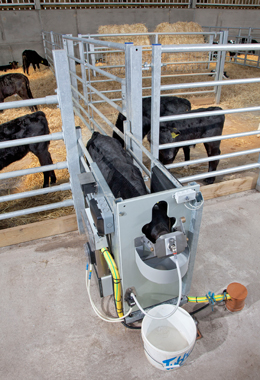
With calves on the farm for 12 weeks the aim is for a target weight of 115kg when they leave to move on to a growing unit. “Calves growing at the optimum 0.85kg a day will achieve this easily and demonstrate their true potential in the system,” adds Steve.
This potential is the result of careful genetic selection in the sires used by the dairy farms producing the calves, adds ABP’s agricultural manager Seth Wareing. “Bulls for use in the Blade system are selected on a number of criteria, with the aim of using short gestation, easy calving bulls with high growth rates. The aim is for efficient calves at every stage of the production process.
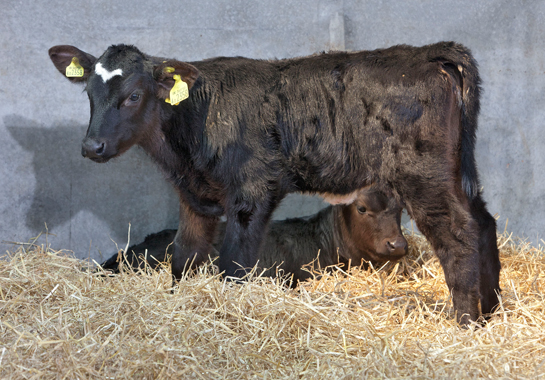
“These bulls have been selected as a result of cooperation with Genus under a new ‘Beef Connect’ relationship between Genus, ABP and Blade. Data from rearing units and slaughterhouse data is being combined to find the bulls which produce calves which perform at every stage of the breeding, rearing and finishing process,” he explains.
“The aim is not just to produce efficient calves, but also to deliver consistency for the consumer in the beef they buy. In the last three years we have worked closely with Genus and have built up a huge data set on calf and finisher performance, meaning we have a much clearer picture of the type of bull we need to produce the right calves for our system.
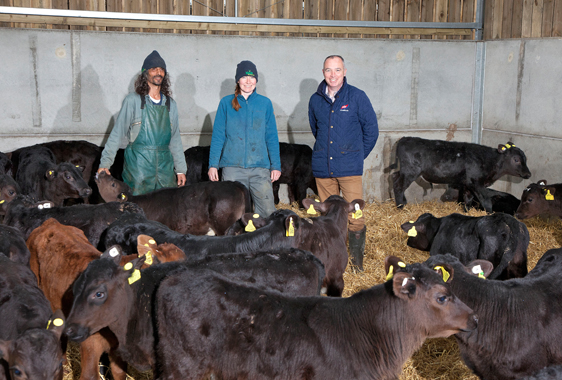
“We’ve targeted bulls with better growth rates, as well as improved marketable retail meat yields with the aim of using consistent genetics alongside our consistent management practices across units to deliver a consistent product.
“The beef supply chain needs to be as efficient as possible and by delivering the best possible calf for the integrated beef system we believe we are achieving that,” adds Mr Wareing.
In a system such as Blade, which had been operating for 15 years, it is important to maximise performance at every level, says Blade Farming managing director and ABP UK’s Agriculture Director Richard Phelps. “It is no good having calves which perform well in the rearing stage, but don’t thrive in the finishing stage and likewise it isn’t ideal to have cattle which produce the ideal carcass, but don’t perform on farm.
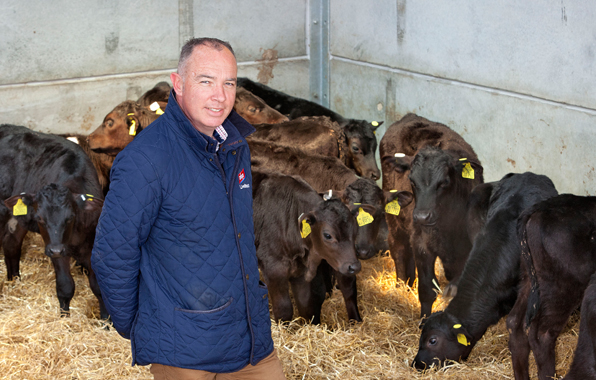
“Working closely with Genus has given us a gateway to ensuring we have the right genetics throughout the system. Aberdeen-Angus bulls currently delivering what we need include Netherton Americano M703, Oakchurch Duster M109 and Gear Fury N290.”
And working with Aberdeen-Angus calves makes sense on all levels, adds Mr Phelps. “Our calf producers benefit from the breed’s easy calving nature as well, as calf vigour and their good early growth rates. Added to that there is no dehorning to do.
“We’ve developed specific health protocols and rations tailored to the system and these ensure we get a consistent performance across all units. The Aberdeen-Angus calves respond well to these feeds and deliver a great end product as a result.”
